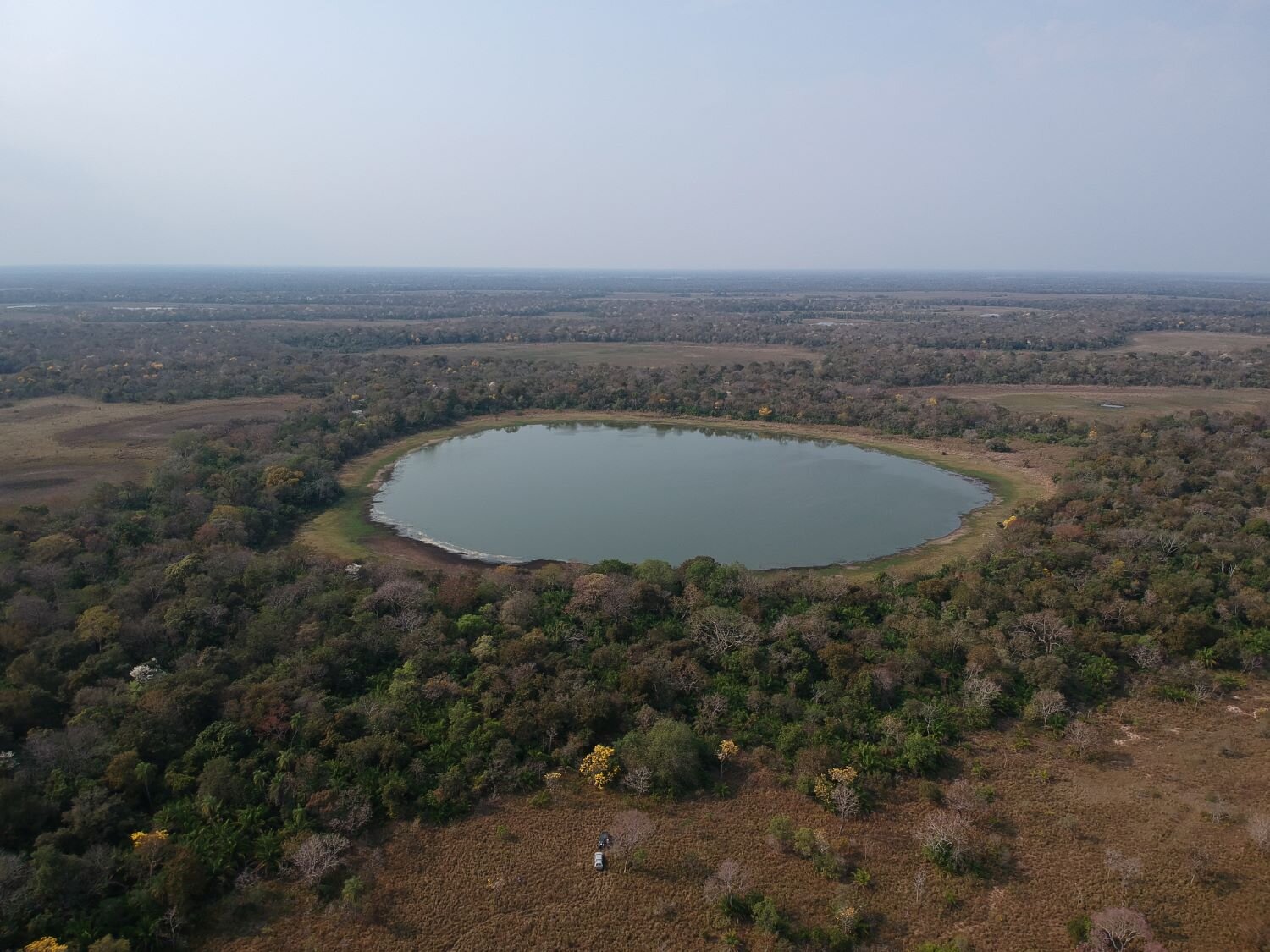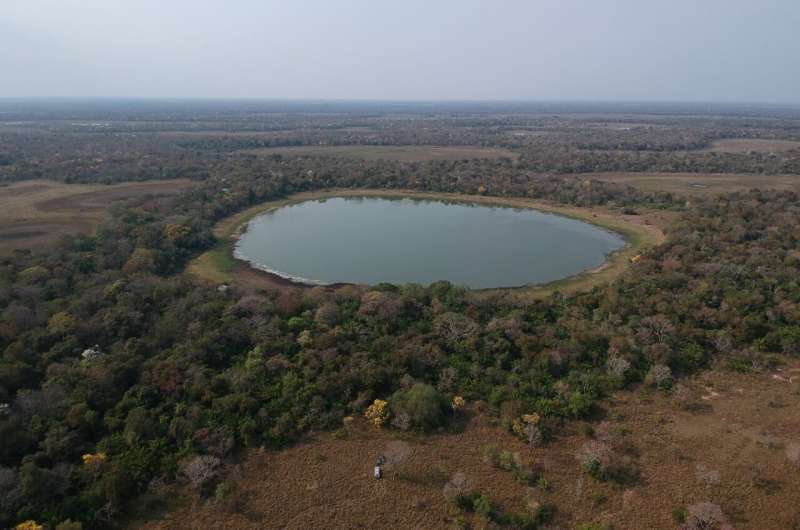

Seasonal variations with alternating dry and rainy seasons and fluctuating levels of nutrients are factors that significantly influence greenhouse gas emissions from soda lakes in the Pantanal, considered less common than emissions from freshwater lakes. The Pantanal is the world’s largest tropical wetland, with an area of 153,000 km2, mostly (77.41%) in southwestern Brazil, but also partly in Bolivia (16.41%) and Paraguay (6.15%).
A study by scientists at the University of São Paulo (USP) and the Federal University of São Carlos (UFSCar) in Brazil proposes a novel perspective on the biological factors that affect these emissions and emphasizes the urgent need for more research on the topic.
There are some 900 soda lakes in the Pantanal. They are shallow and strongly alkaline, with pH levels as high as 11 and concentrations of salts such as carbonates and bicarbonates that directly influence the microbiology of the environment and its diversity of plankton.
An article on the study published in the journal Science of the Total Environment notes the need to include the composition and functions of microbial communities in greenhouse gas emission models in order to be able to analyze these ecosystems more completely and predict how they may react to environmental changes caused by extreme weather and wildfires, for example.
In recent years, the Pantanal has suffered from consecutive extreme droughts and unprecedented waves of wildfires, which peaked at 22,116 in 2020. In the first eight months of 2024, there were 9,167, more than in the full 12 months of each of the previous three years, according to BDQueimadas, a wildfire database run by Brazil’s National Space Research Institute (INPE).
The article classifies soda lakes in the Pantanal into three main types based on water chemistry and the microbial communities they contain: eutrophic turbid (ET), oligotrophic turbid (OT), and clear vegetated oligotrophic (CVO).
The researchers found that ET lakes emitted the most methane, probably owing to cyanobacterial blooms and decomposing organic matter. Decomposing dead cyanobacteria and the organic carbon produced by photosynthesis accelerate the breakdown of organic matter in the water by bacteria and archaea. Byproducts of this process are metabolized in bottom sediment to produce methane, especially during periods of drought.
CVO lakes also emitted methane, but less so. No methane emissions were detected from OT lakes, possibly owing to high levels of sulfate in the water, but they did emit carbon dioxide (CO2) and nitrous oxide (N2O).
“We’re seeing great variation in these lakes and the landscape of which they’re part. Since we collected our first samples in 2017, they’ve almost dried up because of rising temperatures, changing rainfall patterns, and wildfires. Satellite images show the area under water shrinking between 2000 and 2022, along with proliferation of cyanobacteria, microorganisms that perform photosynthesis and make the water green. All this is due to climate change,” Thierry Alexandre Pellegrinetti, a researcher at the Center for Nuclear Energy (CENA-USP) and first author of the article, told Agência FAPESP.
Some aspects of the study were part of Pellegrinetti’s Ph.D. research. His thesis advisor was Marli de Fátima Fiore, a professor at CENA-USP and the last author of the article.
Climate impact
Although natural wetlands occupy only 5%–8% of the world’s surface, they store 20%–30% of its soil carbon, especially in tropical and subtropical regions, and play a key role in the regulation of atmospheric CO2, thereby affecting the climate.
Most of the Pantanal’s soda lakes are in an area known as Nhecolândia, a district of the municipality of Corumbá in the Brazilian state of Mato Grosso do Sul. The biome is home to many plant and animal species. Its biodiversity includes more than 2,000 plants and 580 birds, which benefit from the abundant biomass of plankton in the lakes.
The study found that cyanobacteria blooms are proliferating significantly in the lakes and that the areas in question may soon become major sources of greenhouse gas emissions.
“Our initial focus was to understand the geology of these lakes, how they’ve formed over time, their biogeochemical cycles, particularly in terms of methane, CO2 and N2O emissions,” Pellegrinetti said.
For microbiologist Simone Raposo Cotta, second author of the article and now a professor in the Soil Science Department of the Luiz de Queiroz College of Agriculture (ESALQ-USP), microorganisms in these areas play a crucial role.
“Microorganisms are the foundation for all soda lake ecological processes and ecosystems. They perform nutrient cycling in general and maintain various processes. Hence their huge importance,” she said.
In 2022, the researchers published an article describing what they called the “lifestyle” of bacterial communities in the soda lakes, concluding that cyanobacteria can adapt to adverse environmental conditions during the dry season by absorbing CO2, and that under more favorable conditions during the rainy season they sustain bacterial growth.
Similar soda lakes, albeit larger and deeper, are found in Canada, Russia (where they are even more saline) and Africa. The study used metagenomic data to analyze their biogeochemical cycles and emissions of methane and other greenhouse gases.
According to Cotta, it has not yet been possible to estimate the contribution of emissions from these lakes to the total for the Pantanal biome, but the group is working on several developments, including models to answer this question.
“We’re finalizing studies in other areas of geochemical functioning and formation of these lakes because they’re already changing. Some have higher concentrations of cyanobacteria, leading to changes in the water. A question we’re trying to answer is why this is so and how to mitigate it,” she said.
More information:
Thierry A. Pellegrinetti et al, The role of microbial communities in biogeochemical cycles and greenhouse gas emissions within tropical soda lakes, Science of The Total Environment (2024). DOI: 10.1016/j.scitotenv.2024.174646
Citation:
How emissions from Brazilian Pantanal’s soda lakes contribute to climate change (2024, September 30)
retrieved 30 September 2024
from https://phys.org/news/2024-09-emissions-brazilian-pantanal-soda-lakes.html
This document is subject to copyright. Apart from any fair dealing for the purpose of private study or research, no
part may be reproduced without the written permission. The content is provided for information purposes only.